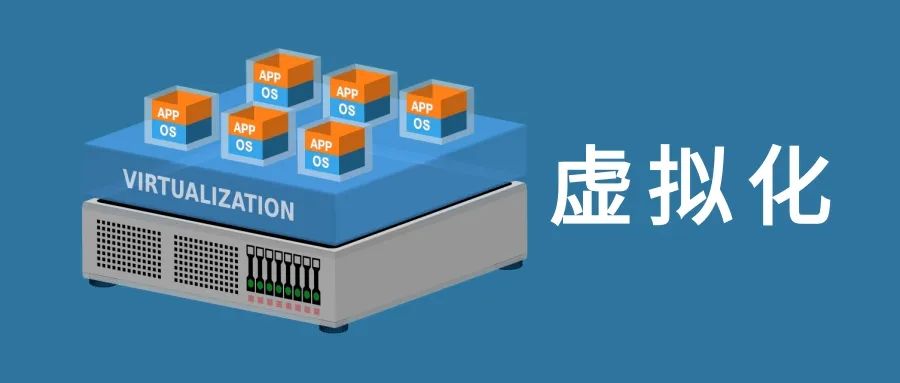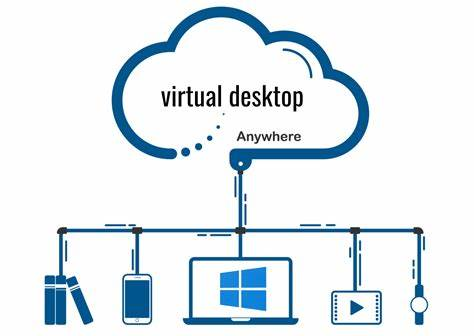Source: Network Technology Alliance
Virtualization did not appear overnight; its development has gone through multiple stages. The earliest forms of virtualization can be traced back to the 1960s, primarily aimed at addressing the low utilization of hardware resources. With the continuous advancement of computer technology, virtualization has gradually evolved into a comprehensive and complex technology, applied in various aspects of data centers.

Types of Virtualization
Hardware Virtualization
Hardware virtualization is one of the earliest forms of virtualization. It divides a physical server into multiple virtual machines (VMs) by running a software layer called a Hypervisor on the physical server, allowing each VM to independently run its own operating system and applications. Notable hardware virtualization technologies include VMware’s ESXi and Microsoft’s Hyper-V.
Software Virtualization
Software virtualization is implemented at the operating system level. By running virtualization software on the operating system, multiple operating systems can run simultaneously on the same physical server. A typical representative of this virtualization method is container technologies like Docker, which provide a more lightweight virtualization solution.
Operating System Virtualization
Operating system virtualization is a form that lies between hardware virtualization and software virtualization. It runs a module called a hypervisor within the operating system kernel, dividing system resources into multiple virtual environments. This method is commonly used for server virtualization and cloud computing platforms.
Cloud and Virtualization
Virtualization and cloud computing are two closely related but distinct concepts.
Virtualization
Virtualization is a technology that creates multiple simulated environments or dedicated resources from a physical hardware system. Its purpose is to run multiple virtual machines on a single physical server through a hypervisor or container technology. Each virtual machine has its own operating system and applications, and they are isolated from each other.
Main Features of Virtualization:
- Resource Isolation: Virtualization technology achieves isolation and independence of resources by abstracting hardware resources into virtual entities.
- Flexibility: Different types of operating systems and applications can run on the same physical server, improving hardware resource utilization.
- Simplified Management: It allows for easy creation, movement, and management of virtual machines, reducing hardware dependency.
Cloud Computing
Cloud computing is a model that provides resources such as computing, storage, and networking on demand to users over any network. It is based on a set of principles and methods that allow users to access shared computing resources via the internet without owning and maintaining physical hardware.
Main Features of Cloud Computing:
- On-Demand Service: Users can obtain and release computing resources as needed, achieving elasticity and flexibility.
- Shared Resources: Resources are shared over the network, allowing multiple users to access the same set of computing, storage, and network resources simultaneously.
- Self-Service: Users can configure and manage the required computing resources through a self-service portal without direct intervention from the cloud provider.
Relationship and Differences
Virtualization is one of the foundational technologies for cloud computing. Through virtualization, hardware resources are pooled to form a dynamically allocatable resource pool, providing flexibility and scalability for the cloud.
Virtualization focuses on the virtualization of hardware resources, while cloud computing offers a higher level of service abstraction, including Infrastructure as a Service (IaaS), Platform as a Service (PaaS), and Software as a Service (SaaS).
Virtualization primarily concerns the separation and isolation of resources, while cloud computing emphasizes on-demand service delivery and resource sharing.
Key Technologies and Concepts
Virtual Machines (VM) and Host Machines
A virtual machine is the basic unit in virtualization technology, representing a complete computing environment that includes an operating system and applications. The host machine is the physical server that runs the virtual machines. The hypervisor is responsible for managing the creation, operation, and destruction of virtual machines.
Hypervisor
The hypervisor is the core component of virtualization, responsible for creating and managing virtual machines on physical hardware. It is divided into Type 1 (bare-metal) and Type 2 (hosted), which run directly on hardware or on top of an operating system, respectively.
Virtualization Management Tools
Virtualization management tools are used to monitor and manage virtualization environments, providing functionalities for creating, configuring, migrating, and monitoring virtual machines. Common management tools include vCenter (VMware) and Hyper-V Manager (Microsoft).
Data Center Virtualization
Data center virtualization is a process that utilizes virtualization technology to transform traditional physical data centers into digital, manageable data centers. Its goal is to achieve more efficient, flexible, and scalable data center operations by abstracting hardware resources into virtual entities. Through data center virtualization, enterprises can better respond to changing business demands, improve resource utilization, and simplify management tasks.
In a virtualized data center, the key working principles mainly involve the creation and management of virtual servers.

Creation of Virtual Servers
The first step in data center virtualization is to abstract physical hardware through the virtualization layer. This is achieved by the hypervisor, which runs on the physical server and allows multiple virtual machines (VMs) to share hardware resources.
With the support of the virtualization layer, administrators can create virtual machines. Each virtual machine is treated as an independent computing environment with its own operating system, applications, and resources.
Pooling and Scheduling of Resources
The virtualization layer pools CPU, memory, storage, and other resources from the physical server into a resource pool. This resource pool allows administrators to allocate and manage resources more flexibly.
Data center virtualization allows virtual machines to dynamically migrate across different physical servers. This dynamic scheduling capability enables the system to automatically adjust resource allocation based on load conditions, ensuring efficient resource utilization.
Flexible Management and Monitoring
Administrators can use virtualization management tools to monitor and manage the virtualization environment. These tools provide a centralized management interface, allowing administrators to create, configure, and migrate virtual machines.
The virtualization environment supports automated operations, including auto-scaling, load balancing, and backups. This simplifies management while enhancing system availability and resilience.
Data center virtualization maximizes the utilization of hardware resources and enables more flexible management by virtualizing physical resources.
Next, let’s explore two other concepts related to data center virtualization:
- Virtual Storage
- Virtual Networking
Virtual Storage
Storage virtualization abstracts physical storage resources into a virtual storage pool for use by virtual machines. Through storage virtualization, data can be shared and migrated between different storage devices, improving the utilization of storage resources. Typical storage virtualization technologies include RAID (Redundant Array of Independent Disks) and Storage Virtualization Devices (SVD).
Storage virtualization can achieve data redundancy and load balancing by aggregating multiple storage devices into a single logical volume. For example, in an enterprise data center, storage virtualization can integrate hard drives of different speeds and capacities to provide higher performance and reliability for virtual machine storage services.
Virtual Networking
Network virtualization divides physical network resources into multiple independent virtual networks, allowing different virtual machines or virtual networks to operate independently. This virtualization method provides more flexible network management and higher utilization of network resources. Typical network virtualization technologies include VLAN (Virtual Local Area Network) and SDN (Software Defined Networking).
Virtual networks create a virtual network layer on top of the physical network infrastructure, allowing different virtual machines or virtual networks to have independent network settings, IP addresses, and security policies. This approach enables data center administrators to configure network topologies more flexibly, improving the efficiency of network resource utilization.
Virtual networks can provide independent network environments for different departments or projects, ensuring data isolation and security. For example, in a cloud computing platform, virtual networks allow different customers to run their virtual machines on the same physical infrastructure without interfering with each other.
Advantages of Data Center Virtualization
1. Maximized Resource Utilization
Data center virtualization maximizes the utilization of hardware resources by abstracting them into virtual entities. A single physical server can run multiple virtual machines simultaneously, making the overall computing capacity of the data center more flexible and efficient. This sharing and dynamic allocation of resources provide significant flexibility, enabling enterprises to better respond to business changes.
2. Flexibility and Scalability
Virtualization technology brings high flexibility and scalability to data centers. Administrators can easily create, adjust, and delete virtual machines based on business needs. This flexibility allows enterprises to adapt more quickly to market changes, enhancing business agility. Additionally, automated management tools enable rapid deployment and scaling to meet the growing demands of the business.
3. Simplified Management and Automation
Virtualization simplifies data center management. Through a unified management interface and automation tools, administrators can more easily monitor and configure the virtual environment. For example, using virtualization management tools, administrators can easily migrate virtual machines, back up and restore virtual machines, and implement resource adjustments, significantly reducing operational complexity.
Desktop Virtualization
Desktop virtualization is a revolutionary technology that is redefining the way enterprises and individuals work. With the rapid development of information technology, traditional desktop computing models can no longer meet today’s complex and changing work demands. Desktop virtualization decouples the user’s desktop environment from physical devices, creating a more flexible, secure, and reliable work environment.
In desktop virtualization, the user’s desktop operating system, applications, and data are no longer dependent on local devices but are migrated to a virtual environment. This virtual environment can run in the cloud, data center, or dedicated servers, allowing users to access and use this virtual desktop remotely through terminal devices (such as personal computers, tablets, or smartphones).

Key Technologies of Desktop Virtualization
Virtual Machine Technology
Virtual machine technology is the foundation of desktop virtualization, simulating multiple independent virtual machines on a single physical computer, with each virtual machine running a complete operating system. This approach allows multiple users to share a single physical computer, enabling different users to run different operating systems and applications simultaneously on the same device.
Containerization Technology
Containerization technology is another method of desktop virtualization. Unlike virtual machines, containers share the host operating system’s kernel, making them more lightweight and faster. Technologies like Docker have become popular choices for deploying and managing desktop virtualization environments.
Types of Desktop Virtualization
VDI (Virtual Desktop Infrastructure)
VDI is a common form of desktop virtualization that deploys the user’s desktop environment on servers, allowing users to access and operate this virtual desktop through terminal devices over the network. This method enables users to achieve consistency in their desktop environment across different devices and improves management efficiency.
DaaS (Desktop as a Service)
DaaS takes desktop virtualization to the cloud, with service providers offering virtual desktop services through cloud platforms. Users do not need to own and maintain their own virtual desktop infrastructure; they simply access the desktop environment in the cloud via the internet. This provides enterprises with greater flexibility and scalability.
Advantages of Desktop Virtualization
1. Flexibility and Accessibility
Desktop virtualization provides users with the ability to access their work environment anytime and anywhere. Employees can easily access their virtual desktops through various devices such as personal computers, tablets, or smartphones, greatly enhancing work flexibility.
2. Unified Desktop Environment
In desktop virtualization models like VDI and DaaS, users can obtain the same desktop environment regardless of where they log in. This consistency helps improve work efficiency and reduces the burden on users to learn different operating systems and applications.
3. Centralized Resources and Simplified Management
By centralizing the desktop environment on servers or in the cloud, desktop virtualization reduces the requirements for terminal devices, allowing even older devices to run virtual desktops easily. At the same time, administrators can more easily perform centralized management, updates, and maintenance, lowering management costs.

Data Center Virtualization vs. Desktop Virtualization
| Dimension | Data Center Virtualization | Desktop Virtualization |
|---|---|---|
| Definition | Abstracts the resources of the entire data center (servers, storage, networking, etc.) to create a virtualized environment. | Decouples the user’s desktop environment and applications from physical devices, enabling remote access through virtualization technology. |
| Main Goals | Improve data center resource utilization, reduce costs, and enhance flexibility and scalability. | Provide users with a flexible, accessible, and unified desktop environment, reduce management costs, and enhance security. |
| Virtualization Technologies | Virtual machine technologies (e.g., VMware, Hyper-V); containerization technologies (e.g., Docker); network virtualization. | Virtual machine technologies (e.g., VDI), containerization technologies; application virtualization (isolating applications from the operating system). |
| Deployment Location | Concentrated on servers in data centers, typically provided as a service through cloud platforms. | Deployed in the cloud, data centers, or dedicated servers, with users accessing remotely through terminal devices. |
| Main Application Areas | Enterprise IT infrastructure, cloud computing, network function virtualization (NFV). | Enterprise office, education, healthcare, cloud service providers. |
| Management and Maintenance | Centralized management of data center resources, achieving resource pooling and automated management. | Centralized management of virtual desktop environments, providing unified desktop management and maintenance. |
| User Experience | Does not directly affect user experience, primarily serving backend computing and storage needs. | Enhances user experience by providing a consistent desktop environment and remote access. |
| Security | Emphasizes the security of the data center, ensuring isolation in multi-tenant environments. | Emphasizes the security of the desktop environment, taking measures to ensure the confidentiality and integrity of user data. |
| Dependency | Higher dependency on hardware and networks, requiring high-speed networks and reliable hardware infrastructure. | High dependency on networks, requiring stable network connections to ensure user access. |
| Deployment Costs | Deployment costs may be high, but operational costs can be reduced through resource pooling and automated management. | Deployment costs are relatively low, with cloud service models allowing for pay-as-you-go options, reducing initial investments. |
Previous Recommendations
Which is the king of high density: rack servers or blade servers?
Illustrated OSI seven-layer model, the easiest to understand!
[Benefits] At the end of the year, sharing over 300 sets of year-end summary/report PPT templates.
The path of network security: what is the difference between DMZ and port forwarding?
What is a virtual router? How does it differ from traditional physical routers?

